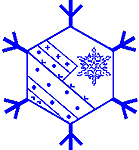Spring and Summer Hazard Summary
Originally prepared for the CSAC Avalanche Center.
Temperature and radiation balance are important factors in spring
and summer. The snow commonly refreezes overnight and softens throughout
the day. If overnight refreezing does not occur or is minimal the
hazard of wet slides will increase earlier in the day. During clear weather radiational cooling counteracts incoming
solar radiation. In late winter and in spring the snow may be stable
for days (at least early in the day) in clear weather but develop
a wet slide cycle during a warm, hazy, or cloudy period. Indications that wet slides are a potential hazard include penetrating
deeper than the ankles and/or sunballs which grow into wheels, penetrating
deeply into the snow. Northerly aspects may take longer to stabilize and reach summer
stability than aspects which get more solar radiation. This is especially
true at higher elevations. While summer snow (firn) is typically very stable, fresh snow
may fall any time of year at higher elevations. Winter stability
considerations may then apply, but remember that strong solar radiation
can cause especially rapid changes in the snow after such a storm.
Stabilization is often quicker than in winter, but until it occurs
the time of day will be an important factor to consider in route
selection and timing. Watch rock outcroppings and cliffs where the heat from the sun
will be conducted into or under the snow. Consider the consequences of even a small slide. In many cases
even a small wet point release can carry a climber into a crevasse
or over a cliff band. Beware of snowfields above any cliff bands
or gullies which may threaten you from above. Carry beacons and rescue gear, even in late spring and summer.
A shovel has many uses, and if you own a beacon it doesn't make
sense not to wear it in potential avalanche terrain. On glaciers be cautious around bergschrunds and crevasses which
sometimes create crown lines. This may be due in part to glacier
motion and/or to the effect of these areas on the wind flow. Ice avalanches (icefalls) on glaciers are unpredictable. They
are primarily due to glacial motion. They may be more active during
or following an extended warm spell. Time of day is largely irrelevant.
Minimize exposure to this hazard by traveling quickly or staying
out of the runout area below these (usually) obvious areas.
|
HTML 4.01 Transitional Compliant -
Validate
|
